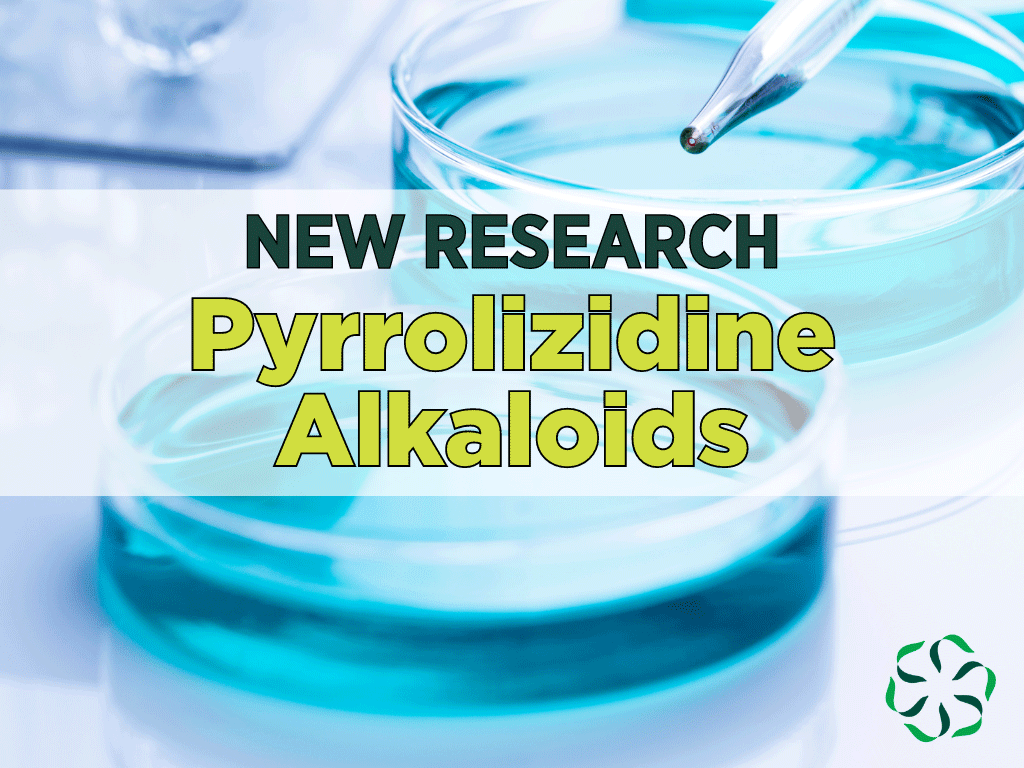In this post, we explore new CRIS research on pyrrolizidine alkaloids and how it may impact regulatory decision-making processes.
What are pyrrolizidine alkaloids (PAs)?
Pyrrolizidine alkaloids (PA) describe a group of more than 600 naturally occurring compounds produced by plants.
Plants typically produce PAs as a defense mechanism against herbivores. When consumed in high enough quantities, PAs can cause adverse health effects, typically impacting the liver.
Where do we find pyrrolizidine alkaloids?
Pyrrolizidine alkaloid compounds contaminate many different foods, including:
- Teas
- Honey
- Grains
- Supplements (from plant matter included in the compounds)
Are pyrrolizidine alkaloids natural?
Yes, PAs are naturally occurring contaminants, meaning humans do not add them to plants, foods, or supplements.
Plants produce PAs independently to help prevent herbivores (e.g., insects) from eating the plants.
Are pyrrolizidine alkaloids regulated?
Currently, there has yet to be a consensus among regulators on how best to regulate PA contamination. Some agencies focus on hazards, and others incorporate risk.
For example, the European Food Safety Authority (EFSA) has a blanket regulation on all PAs, meaning that the EFSA considers all 600+ naturally occurring PA contaminants equally potent and toxic as the most harmful singular PA chemical.
The encompassing PA regulations result from the precautionary principle, which emphasizes hazard over risk.
Remember, a hazard is something that could be harmful. Risk is the outcome of a hazard times your exposure. We calculate risk using the formula: hazard X exposure = risk.
Learn more about hazard vs. risk and the precautionary principle: go.msu.edu/BgC5
Context on pyrrolizidine alkaloids.
Due to health and environmental concerns, people and regulators have become more hesitant to use pesticides to prevent weed growth. Herbivores (e.g., insects) consume plants, including weeds, and then weeds produce PAs.
When harvesting crops, weeds (and PA contaminants) make their way into our food supply.
Now, blanket bans on PAs mean there is the potential for crop loss, which can, in turn, impact food security.
What did we learn about pyrrolizidine alkaloids from CRIS research?
Since pyrrolizidine alkaloids describe more than 600 compounds, we looked at specific PAs in a novel cell-based assay system to see how they may impact liver health; one of the critical organs adversely impacted by PAs.
Our novel cell-based assay system allowed us to analyze multiple cell types that make up the liver simultaneously. This was important because PAs do not impact all cells within the liver equally. Previously, the majority of research surrounding PA toxicity studied PA toxicity in rodents.
CRIS research used human cells, which are more relevant to human biology and human safety.
Additionally, we used five specific pyrrolizidine alkaloids, measuring differences in potency between each PA. Our research shows that some PAs are incredibly potent in bringing about cell death and DNA damage, while others demonstrated little to no impact at the same concentrations.
CRIS research suggests that we must consider specific PA compounds when determining tolerable intake because we cannot make the assumption that all 600+ compounds will result in the same adverse health outcomes at the same levels of exposure.
How do CRIS’s findings on pyrrolizidine alkaloids impact regulations?
CRIS’s research does not directly impact regulatory decisions. Rather, it demonstrates that blanket regulations on entire families of compounds—measures that could significantly affect food security—are not founded on widely accepted scientific principles.
CRIS’s findings support a regulatory approach based on assessing and managing risk, to ensure regulations that are both scientifically sound and aligned with public health objectives as opposed to a more precautionary, system-based framework.
The research takeaway.
We are not arguing that these compounds are safe at all levels and potencies. We’re saying we need risk assessment based on the individual chemicals, not on the family of chemicals.
The good news.
At CRIS, we will continue to look into ingredients and contaminants with a focus on the safety and wellbeing of people.
Read our paper: Utilization of a novel human hepatocyte-endothelial cell coculture model to determine differential toxicities of pyrrolizidine alkaloid food contaminants at doi.org/10.1016/j.fct.2024.114584.
If you have any questions about foods and ingredients, please email us or submit your idea at go.msu.edu/cris-idea.

